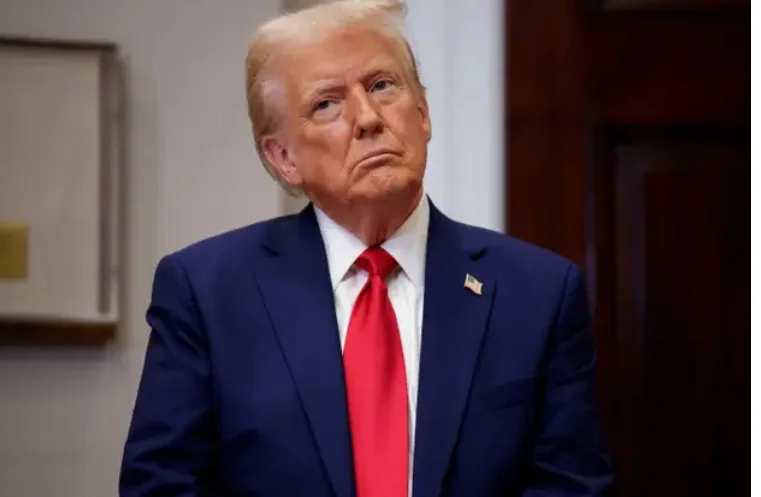Islamabad, Mar 11, 2025: The U.S. stock market has suffered a massive $4 trillion loss in valuation as investors react to President Donald Trump’s strict trade policies, sparking concerns about a potential economic slowdown.
On Monday, the S&P 500 index dropped 2.7%, marking its steepest daily fall this year, while the Nasdaq Composite, heavily dominated by tech stocks, plunged 4%—its sharpest decline since September 2022.
This latest downturn has pulled the S&P 500 down by 8.6% from its record high on February 19, nearing the 10% correction territory.
Trump’s recent tariff policies targeting major trade partners, such as Canada, Mexico, and China, have fueled widespread uncertainty among businesses and investors.
Shifting trade policies from the administration have raised alarms in corporate circles, with experts warning of severe economic ramifications if tensions persist.
“There has been a clear change in investor sentiment,” noted Ayako Yoshioka, senior investment strategist at Wealth Enhancement. “What previously drove market growth is now losing its effect.”
Market Volatility and Corporate Setbacks
The market instability has significantly impacted leading corporations. Delta Air Lines, for instance, cut its first-quarter profit estimates by 50%, causing its shares to plummet 14% in after-hours trading. Delta CEO Ed Bastian pointed to growing economic uncertainty as a major factor behind the downgrade.
Read More:
Global Reactions to Egypt’s $53bn Gaza Reconstruction Plan
Investors Rattled by Policy Risks
Analysts suggest that the administration’s readiness to accept market fluctuations to advance its trade strategy has unsettled investors.
“The government appears more willing to endure market declines—even a possible recession—to fulfill its trade goals,” said Ross Mayfield, investment strategist at Baird.
Data from the Federal Reserve highlights the deepening economic disparity, with the top 10% of Americans controlling 87% of corporate equities and mutual fund shares, while the bottom 50% owns just 1%.
The tech sector, which has driven market rallies in recent years, faced severe losses. The S&P 500’s technology division fell 4.3%, with Apple and Nvidia both dropping around 5%.
Tesla experienced an even steeper 15% decline, erasing approximately $125 billion in market value.
Other risk assets also suffered, with Bitcoin losing 5%. Meanwhile, defensive investments like utilities saw gains as investors shifted to safer assets such as U.S. Treasury bonds. The yield on 10-year Treasury notes fell to 4.22% due to increased demand.
Prolonged Market Uncertainty
Uncertainty surrounding U.S. economic policies has prompted hedge funds to reduce their stock exposure significantly—their largest pullback in over two years, according to a report by Goldman Sachs.
“Investors initially bet on Trump’s pro-growth policies, but escalating trade conflicts and unpredictable policy moves are making them cautious,” said Michael O’Rourke, chief market strategist at JonesTrading.
Despite the recent selloff, stock valuations remain high. As of Friday, the S&P 500 was trading at 21 times its projected earnings for the next year, far above the historical average of 15.8 times, according to LSEG Datastream.
“The market has been looking for a correction trigger, and a combination of trade war fears, geopolitical instability, and economic uncertainty may be the catalyst,” said Dan Coatsworth, an analyst at AJ Bell.
As investor sentiment weakens, Deutsche Bank analysts warn that the S&P 500 could drop to 5,300, representing another 5.5% decline if market positioning continues to weaken.
Meanwhile, market volatility is on the rise, with the Cboe Volatility Index (.VIX) reaching its highest close since August, reflecting heightened investor anxiety.
“The administration is still trying to define what a successful trade policy looks like, both politically and economically,” said Edward Al-Hussainy, senior analyst at Columbia Threadneedle Investments. “Until there’s clarity, market fluctuations will persist.”
